B. Traven, German underground author, anarchist, and writer of the Treasure of Sierra Madre, purposely obscured his origins to evade consequences from his revolutionary past in Germany and to stoke his literary mystery that hinged upon his words: “An author should have no other biography than his books.”
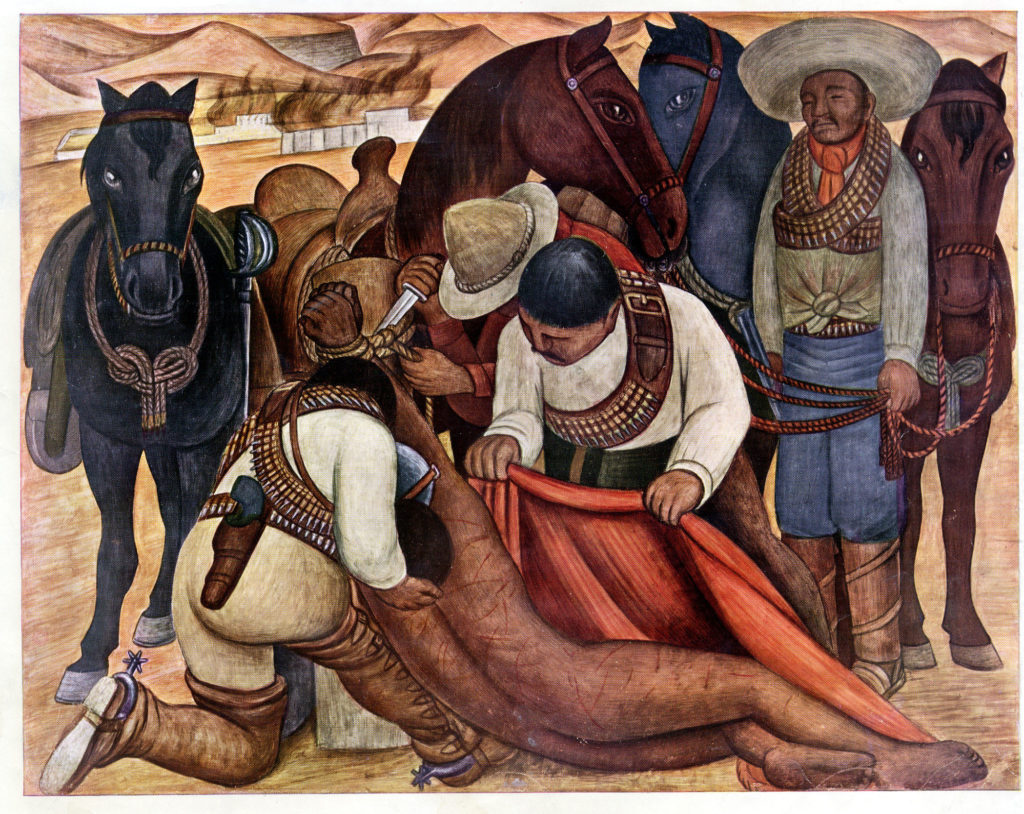

His Widow Reveals Much Of Who B. Traven Really Was
By Larry Rohter, Published in The New York Times
MEXICO CITY, June 24, 1990 — Who was the man who wrote under the pseudonym B. Traven? One of the most intriguing literary mysteries of the century may at last have been solved, and a new puzzle opened, because of the willingness of the widow of the secretive author of ”The Treasure of the Sierra Madre” finally to reveal what her husband had told her of his past.
”I always knew,” Rosa Elena Lujan said as she stood in the writer’s studio here, near Traven’s Remington typewriter and amid paraphernalia from his days as a jungle explorer. ”Sometimes, at midnight, when we were already in bed, he would start to talk, and then he would talk and talk. But he told me no one else could know the truth until after his death.”
The question of Traven’s identity has fascinated both critics and readers of his novels and stories, which have sold some 25 million copies in more than 30 languages. From the moment his first works were published in Germany in the 1920’s Traven evaded all efforts to identify him and encouraged contradictory and often fantastic accounts of his life. When he died here on March 26, 1969, he left all the important questions unanswered.
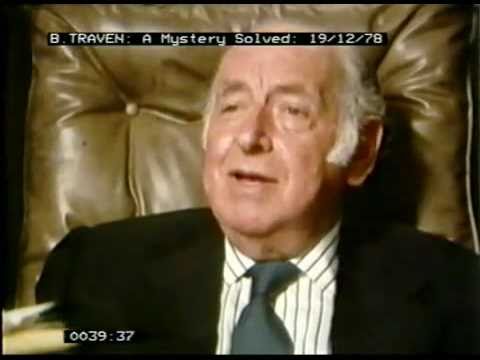
Watch this video on YouTube
B. Traven – A Mystery Solved – By William Wyatt, BBC Documentary Part 1
With his insistent psychologization of the elusive novelist B. Traven, ’70s documentary film-maker and biographer William Wyatt demonstrates a singular inability to understand the political stakes of refusing identification. — Neinsager
Some of the Possibilities
Was he Traven Torsvan, born in Chicago on May 3, 1890, of Norwegian immigrant parents, as indicated by the passport he received when he became a Mexican citizen in the 1950’s? Or was he, as most literary detectives suspected but Mrs. Lujan always denied, Ret Marut, a shadowy German actor turned revolutionary who took part in the uprising that briefly established a Soviet republic in Bavaria in 1919? Could he also have been Hal Croves, a taciturn ”agent” of Traven’s who served as technical adviser to John Huston when he directed the classic film version of ”The Treasure of the Sierra Madre”? And what about the surnames Arnold, Barker, Feige, Kraus, Lainger, Wienecke and Ziegelbrenner, all of which were associated with Traven at one time or another?
In the absence of any reliable information on Traven’s origins, a variety of bizarre theories have evolved. There have been suggestions, some of them fostered by the writer himself, that Traven was a pseudonym adopted by Jack London or Ambrose Bierce or Adolfo Lopez Mateos, a former President of Mexico.
The Mexican Government would also like to know more about the writer, whose politically charged novels of life among oppressed Indians, peasants and oil workers, such as ”General From the Jungle” and ”Rebellion of the Hanged,” are now required reading in Mexican schools. On the occasion of what it believes to be the centenary of the writer’s birth, the National Council for Culture and the Arts is sponsoring an investigation into Traven and his work.
“A trip to a Central American jungle to watch how Indians behave near a bridge won’t make you see either the jungle or the bridge or the Indians if you believe that the civilization you were born into is the only one that counts. Go and look around with the idea that everything you learned in school and college is wrong.” — B. Traven, “The Bridge in the Jungle“
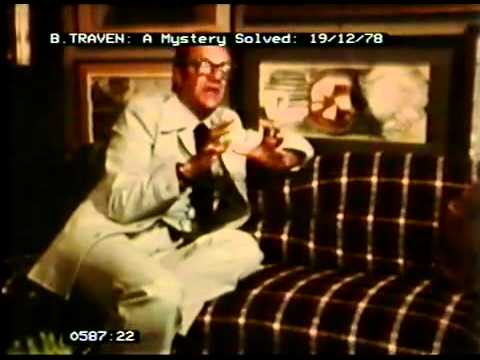
Watch this video on YouTube
B. Traven – A Mystery Solved – BBC Documentary Part 2
Mexico Seemed in His Bones
”There has never been a case like Traven, and not just because of the mystery about him,” said Jorge Ruiz Duenas, secretary general of the council. ”He seemed to feel Mexico in his own flesh. Other foreign-born writers, such as Malcolm Lowry or D. H. Lawrence, have written well about Mexico, though with a certain sense of detachment or rejection or mimicry. Not Traven. He doesn’t translate Mexico’s social reality and culture, he incorporates and captures it as if he were born here a Mexican, with all of the feeling.”
After years of silence and tantalizing obfuscations, Mrs. Lujan says she has finally decided to clear up much of the mystery surrounding her husband. In an interview in the house in downtown Mexico City where she lived for nearly two decades with the writer and her two daughters from a previous marriage, she acknowledged that her husband ”lived something like 10 lives” and had in fact invented and assumed the identities of Marut, Croves and several others.
”He told me that once he died, I could say that he had been Ret Marut, but not before,” she explained. ”He was afraid he would be extradited. So I always had to lie, because I had to save my husband.”
Mrs. Lujan confirmed that [Traven had been known as Ret Marut] to me in 1966. I reported it in a two-part series in Ramparts in September 1967, along with an analysis of the similarities between the writing of Marut and Traven. I make no claim to originality here. Those parallels had first been recognized by a German anarchist and poet, Eric Muhsam, who participated with Marut in the Bavarian revolution. They were later detailed in a biography of Traven by the East German writer Rolf Recknagel. — Judy Stone
STORY: B. Traven’s “Macario” – Magical Realist Journey on Day of the Dead
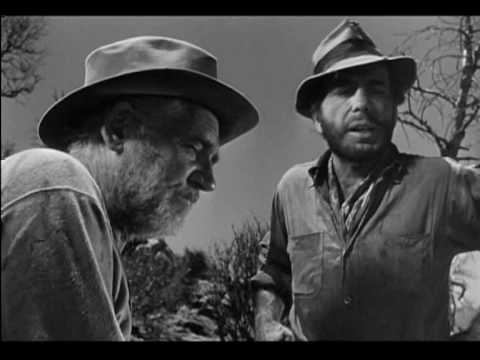
Watch this video on YouTube
Treasure of the Sierra Madre, Trailer of the film by John Huston, 1948
The demonstration [of a particular person’s relation to the civil apparatus of ‘identity’ and ‘class’] is clear in The Death Ship, with its accidentally stateless narrator and the ‘Anacharsis Clootz deputation’ joining him in perpetual exposure to ‘work-related’ death at sea, but it also applies in the Mexican novels, where the life of indigenous workers in logging, oil drilling or crop picking is just as disposable inside the ‘national territory’ as that of the coal drag adrift between ports and expulsions. In both cases the disposability of laboring life is guaranteed by the state; in fact the lethal threat from the administration of ‘identity’ is most acutely expressed in the ‘Jungle’ series, where the indentured workers are bound to the logging camps, carreta trains or simple peonage by the debt that endlessly accrues to their recorded names. — Neinsager
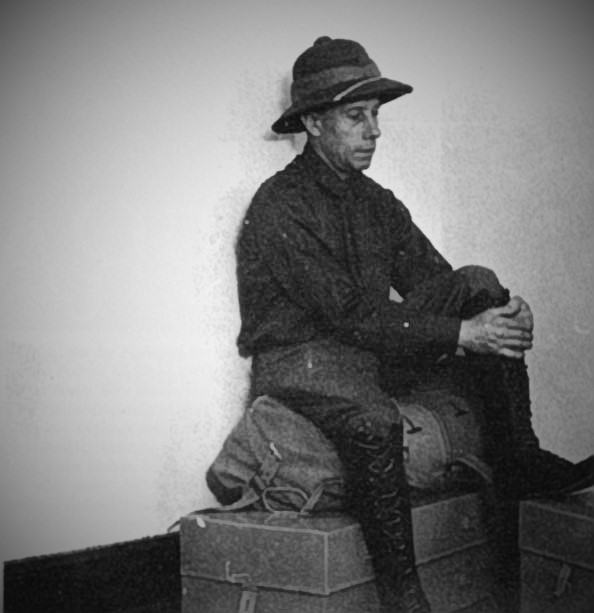

Centennial Ends Silence
Mrs. Lujan, 74 years old, said she had not disclosed in earlier interviews what she knew of her husband’s identity because ”even after his death, I knew it would bother him.” She decided the centennial was an appropriate time to make public what she knows.
Traven’s fear of being sent back to Germany stemmed, Mrs. Lujan said, from his involvement in revolutionary politics immediately after World War I as an editor of a fiery anarchist journal called Der Ziegelbrenner (The Brick Burner). Following the collapse of the Soviet Republic he had fought for, Ret Marut was apparently captured by the police in Munich, jailed, and sentenced to death.
The Mexican film director Gabriel Figueroa, one of Traven’s closest friends, said: ”The version he told me is that he was handcuffed and placed aboard a truck to be taken away and shot. But the truck wasn’t shut very well and there was complicity on the part of the driver, so he kicked the door open and jumped out with another prisoner. But the other man, who was also handcuffed, fell on his head and died instantly.”
Even as an old man, Mr. Figueroa said, Traven ”had a very large scar on his hand,” as if from handcuffs, leading the director to believe the story was true.
“The prison was very important – as everywhere on earth. Everywhere the building of a prison is the first step in the organization of a civilized state.” — B. Traven
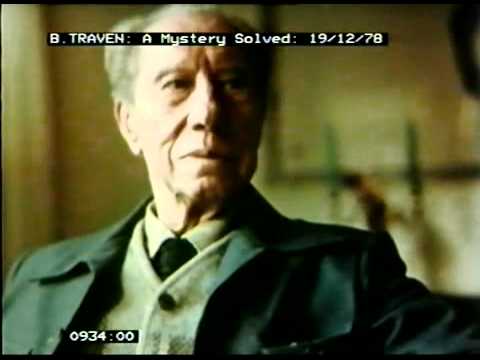
Watch this video on YouTube
B. Traven – A Mystery Solved – BBC Documentary Part 3
A Clue May Lie In His Own Hand
Dr. Karl S. Guthke, a professor of German art and culture at Harvard University, has also concluded that Traven and Marut were one and the same. Dr. Guthke is the author of a book tentatively titled ”Traven: Biography of an Enigma,” to be published next year by Chicago Review Press, Traven’s American publisher. Dr. Guthke was given access to the author’s papers by Mrs. Lujan.
”One thing that makes me sure is the handwriting,” he said in a telephone interview from Cambridge, Mass. But he also cited circumstantial evidence, such as ”his first diary in Mexico, in which Traven writes that ‘the Bavarian of Munich is dead,’ ” and certain hints in the books that Traven would later write after he landed in the port of Tampico in 1924, apparently after jumping ship.
Once in Mexico, Traven worked as a field hand, picking cotton, before being hired as a photographer for an archeological expedition. He also claimed to have worked as a book vendor, nut grower, exterminator, translator, mechanic and baker.
”When he was B. Traven, he wrote his novels in German and occasionally made allusions to places, small provincial towns, where Ret Marut had been an actor,” Dr. Guthke continued. ”There is a kind of hide-and-seek with tiny places that had figured in the biography of Ret Marut.”
“It was as though over this solid dense world of plants floated a call urging creation to beget a new planet, a fantastic one in which not man or beast would be the master but plants. One felt lonely and abandoned, separated from all the remaining world, in spite of the long file of peons and the grunting and snorting pack animals marching along mechanically. The marchers, men and animals, seemed to move without volition, almost dreamlike, into the world of plants to be swallowed up by it.” — B. Traven, “March to the Montería”
STORY: B. Traven: An Anarchists Death Ship
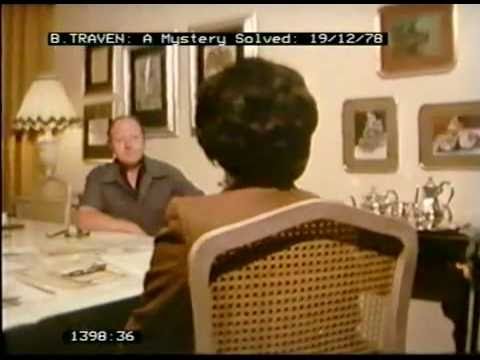
Watch this video on YouTube
B. Traven – A Mystery Solved – BBC Documentary Part 4
Treating Identity As a State of Mind
The irrelevance of anyone’s formal identity, in the form of documents like birth certificates and passports, is a major theme of ”The Death Ship,’‘ which many critics regard as the finest of Traven’s novels. An account of the adventures of a U.S. sailor stranded in Europe without papers or money, the book mocks state bureaucracies and their insistence on documents, a practice Traven also brought to his own life.
“He loved to tangle things up,” Mrs. Lujan said. ”In a certain sense, it was a defense, a form of vengeance. He would tangle people up and then laugh about it. He invented many lies and loved it when people made mistakes.”
When Mrs. Lujan first met the writer, at a party here for the violinist Jascha Heifetz in the 1930’s, he was introduced as Traven. But when she next met him more than a decade later and was hired to help him translate a movie script into Spanish, she was surprised to hear Mr. Figueroa and others call him a different name.
”From the moment he started with the movie thing and writing scripts, he used the name Hal Croves,” she said. ”Once I said to him, ‘And what about Croves?’ He said: ‘I had a grandfather who had a surname pretty close to that. It’s Scottish.”
Mrs. Lujan found, though, that she could not press too closely on questions of Traven’s past, accepting that she would learn no more than her husband was willing to tell. ”When I suspected something and asked him about it, he would get furious,” she recalled. ”He used to say, ‘Nobody should ask anyone else about anything, because questions only oblige one to lie.’ ”
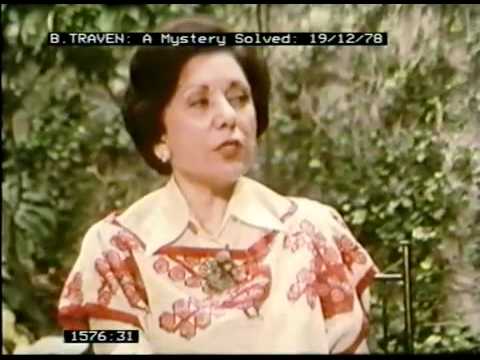
Watch this video on YouTube
B. Traven – A Mystery Solved – BBC Documentary Part 5
The Final Enigma Within the Mystery
As a result, Mrs. Lujan acknowledged, one fundamental question about her husband remains unanswered: Who was Traven before he assumed the identity Ret Marut?
”I doubt that question will ever have an answer,” Dr. Guthke said. ”Ret Marut can be traced back to 1907. But where and what he was before that, nobody really knows. It is a question that is going to remain unsolved unless a miracle happens.”
A decade ago, an investigation carried out by a team from the British Broadcasting Corporation, the results of which were later televised as a documentary and published as a book, ”The Man Who Was B. Traven,” concluded that Traven had actually been Hermann Albert Otto Maximilian Feige, who was born in 1882 in the town of Swiebodzin in what today is Poland. But both Mrs. Lujan and Dr. Guthke find that hypothesis unconvincing.
Another theory, sometimes referred to approvingly by Traven himself, was that the writer was actually the illegitimate son of Kaiser Wilhelm II, offspring of an affair between the German ruler and an actress. At his home here, Traven kept a large collection of newspaper clippings and photographs of the Kaiser, an odd trait in a self-proclaimed anarchist. In addition, Ret Marut was known among his revolutionary associates in Munich as the Little Prince. Dr. Guthke said, ”If you don’t know who your father was, why not pick the best?”
STORY: Death By Misadventure: Malcolm Lowry’s Gin-Sopped Volcano
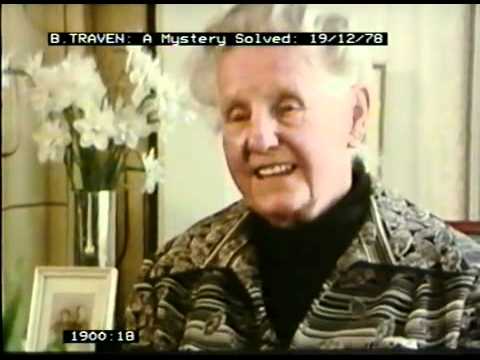
Watch this video on YouTube
B. Traven – A Mystery Solved – BBC Documentary Part 6
But during World War I, Ret Marut told German authorities that he had been born in San Francisco in 1882, a claim he later repeated to the British police before he was jailed and deported in 1923 as a ”German Communist” and illegal alien, and also to American Embassy officials in both countries. His widow now says, though, that this too was just another example of his lifelong effort to confuse pursuers real and imagined.
”That’s why he picked San Francisco,” she said. ”Nobody could prove anything because everything had been burned during the earthquake” that destroyed the city in 1906.
Traven Assumes His Mexican Persona
In the mid-1950’s, the writer acquired a Mexican passport under the name Traven Torsvan, giving his place and date of birth as Chicago on May 3, 1890. On Mexican Government immigration documents dating to the 1930’s, he claimed to have entered Mexico for the first time at Ciudad Juarez in 1914 and to be a native of Chicago.
”For me it is most likely that Traven was born there,” Mrs. Lujan said. ”He talked to me of childhood things in Chicago.” He also talked, disapprovingly, she said, of his mother, ”a beautiful actress of Irish or English blood” named, as best she can remember, Helene Ottorent. But the few tape recordings of Traven, one of which was played recently on a television program sponsored by the Mexican Government about his life and work, show that he spoke English with a pronounced German or Scandinavian accent.
“From the far distance sounded the muffled howling of a family of monkeys, monos gritones, passing the night in the crowns of the mighty trees. It echoed through the jungle like the roar of an angry mountain lion. Gruesome and terrifying, it seemed to tear the night apart, but it did not disturb the jungle. It sang and fiddled, chirped and whistled, whined and whimpered, rejoiced and lamented its ever-unchanging song with the constancy of the roaring sea.” — B. Traven, “Trozas”
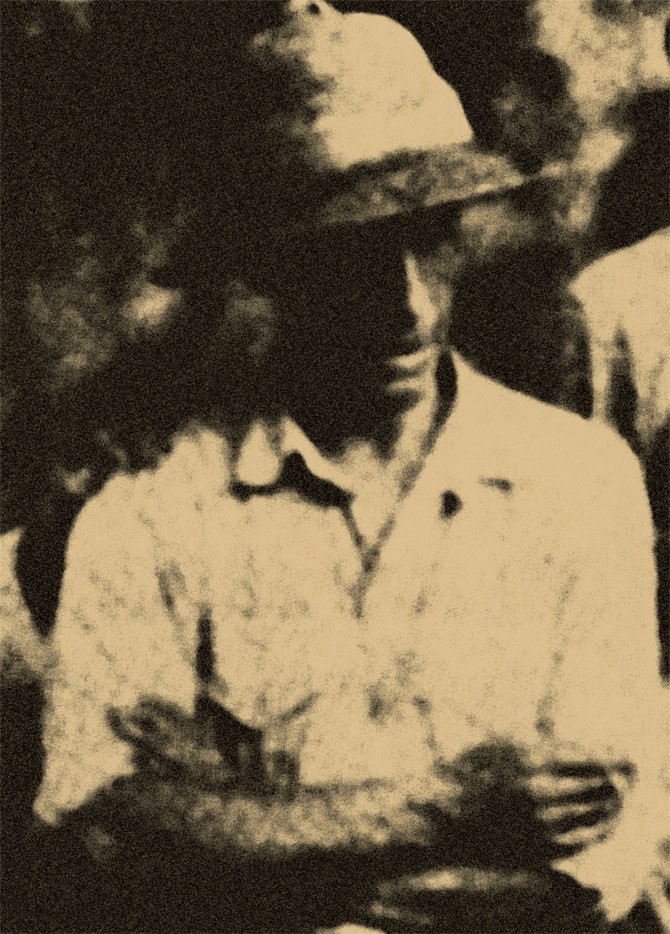

“I don’t rule out an American birth,” Dr. Guthke said. ”He may have been the son of a German actress who performed in the United States and returned to Germany when he was a kid.”
Once, when one of the more persistent journalists wrote Traven and bluntly asked ”Who the hell are you?” the writer replied, ”If I knew, I think I would not be able to continue writing, or wouldn’t have written the books I have written.”
Mrs. Lujan recalled, ”He used to say to me: ‘I am freer than anybody else. I am free to choose the parents I want, the country I want, the age I want.’ ” But ”the reality of it is that he did not know exactly how or where he had been born,” Mrs. Lujan continued. ”He never had a birth certificate.”




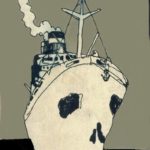
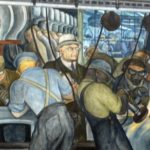







Pingback: B. Traven's "Macario" - Magical Realism on Day of the Dead | WilderUtopia.com
Traven Torsvan Croves was born in Chicago, where there was at the time a very well establish group of Norwegian anarchists. His parents were from Norway and he picked up the Norwegian accent, as it was told by two sisters from Denmark who atended Summer School at UNAM back in the twenties and chose to saty in México for the long, long term. So, forget about the Ret Marut hypothesis and the Traven´s German language.
We all are allowed to tell each other stories…
I guess you missed the part where he published all his novels in…not Norway…but Germany. And how did this Norwegian anarchist family come to write in fluent German?
Pingback: Incredible Lightness of Quetzalcóatl | Radio Free | Independent Media for People, Not Profits.
Pingback: ¿Quién era B. Traven, el misterioso gigante literario de México? – Ultima Fuente
Pingback: The Secret Life of B. Traven, Mexico’s Mysterious Bestseller - Havana Times
Pingback: The Secret Life of B. Traven, Mexico’s Mysterious Bestseller - Noticias Cubanas